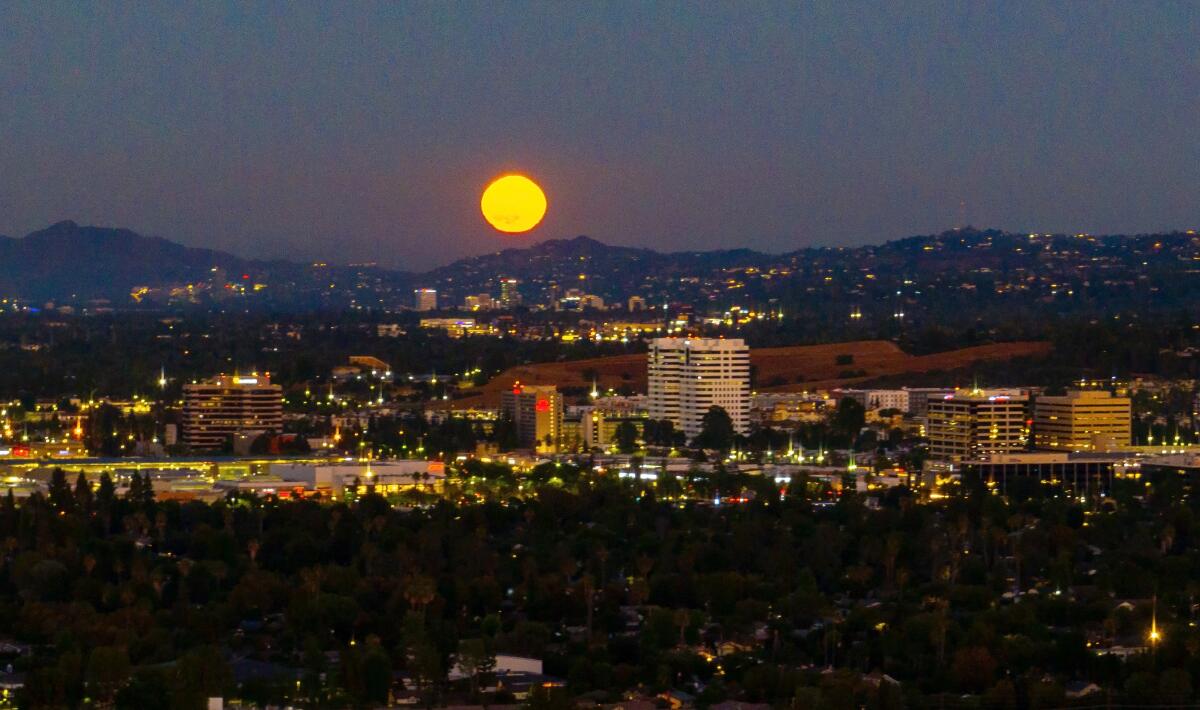Is your community unsafe or are you just watching the news?
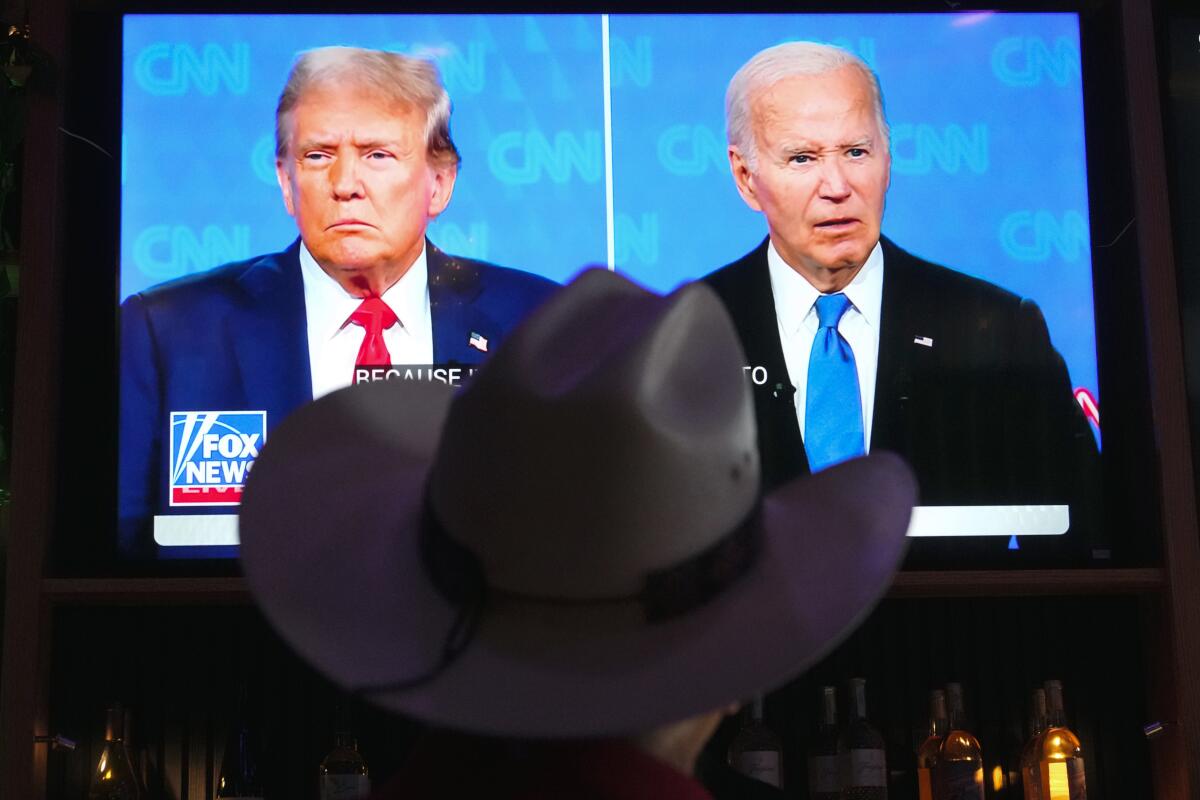
- Share via
Good morning. It’s Wednesday, Aug. 21. Here’s what you need to know to start your day.
- Data vs. vibes: How safe are you feeling?
- After massive sewage spill that polluted beaches, L.A. agrees to spend $20 million on improvements.
- 12 of L.A.’s prettiest picnic locations that are conveniently near delicious takeout.
- And here’s today’s e-newspaper.
You're reading the Essential California newsletter
Our reporters guide you through our biggest news, features and recommendations every morning
You may occasionally receive promotional content from the Los Angeles Times.
News coverage and social media fuel crime fears. What do the numbers show?
What’s election season without an onslaught of polls?
For instance: California voters will decide on Proposition 36 in November, which would impose stricter sentences for repetitive theft and offenses involving fentanyl.
A recent poll from the UC Berkeley Institute of Governmental Studies, co-sponsored by The Times, shows a majority of voters in favor of those stronger punishments.
Another survey (also from that UC Berkeley institute and The Times) shows attorney Nathan Hochman with an edge over incumbent George Gascón.
“Many seem to blame Gascón for the sense that crime is spiraling out of control,” Times reporter Conner Sheets said, “even as some statistics contradict that narrative.”
Political polling can, famously, get it wrong, but can also be a useful indicator of how people perceive the world around them and what to do about it. Based on recent surveys and political rhetoric, it seems voters are influenced less by contextual data and more by vibes.
But what do the numbers show?
The number of homicides in California and the U.S. overall dropped last year compared with 2022. Fewer rapes were also reported in the state last year, though an increase in robberies and aggravated assaults fueled a 3% increase in overall violent crime.
Overall property crimes were down slightly in 2023, though car thefts increased nearly 8%, per a report from state Atty. Gen. Rob Bonta.
Both homicides and shootings fell in the city of Los Angeles after a pandemic surge, according to LAPD data. But homicides increased 8% last year in the county of L.A., according to the Sheriff’s Department.
More recently, many major U.S. cities are reporting sharp drops in homicides in the first half of 2024 compared with the same six months in 2023.
By some key indicators, many communities are seeing crimes recede after the COVID crime surge. Despite that, people don’t feel safe.
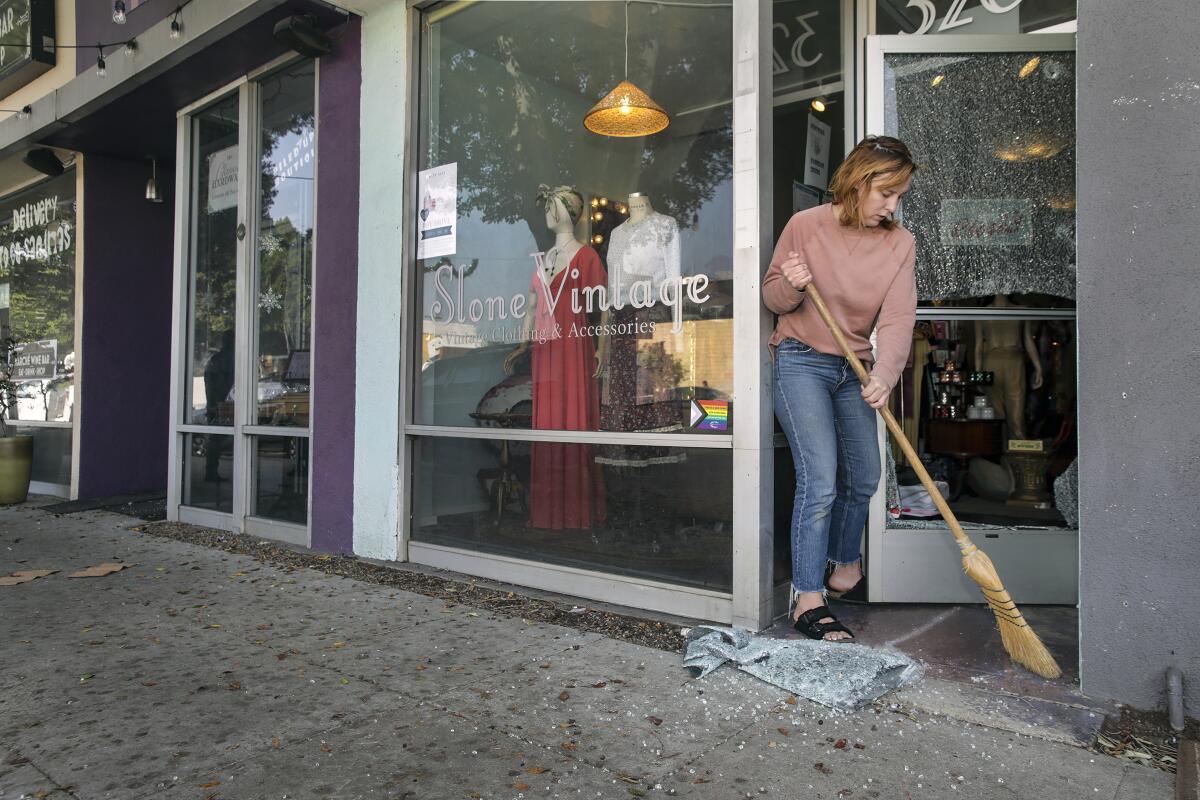
In a Gallup poll published in November, 63% of respondents said crime was an “extremely serious” or “very serious” problem in the U.S., while 17% said the same about their local area. Both were the highest shares of those responses in more than two decades of surveys.
One factor in that feelings-versus-data disconnect, as my colleague Noah Bierman reported last year, is partisanship. Republicans typically rank big cities as far less safe than Democrats in Gallup polls.
But it’s also important to note that media coverage — and the stream of content it breeds on social media — plays a major role in how safe or unsafe we feel. As crime remains a focal point this election cycle, let’s unpack that.
Mean world syndrome
I spoke with Pamela Mejia, director of research and associate program director at Berkeley Media Studies Group, whose research focuses on media narratives about violence and crime.
She told me the reaction people have to perceived crime is often shaped through a cognitive bias known as “mean world syndrome.”
“The more media that people consume that depicts the world as a violent place, the more likely people are to believe that the world around them is indeed a violent place,” Mejia said. “That’s going to then affect their belief in the world around them and … the decisions they make should reflect that, whether that’s in terms of who they vote for, who they support, [or] what policy platforms they are open to.”
News media often concentrate a narrow attention on “the most high-profile or extreme acts,” she said, which leads most of us to have a naturally visceral reaction.
“It’s fear, it’s anxiety, it’s terror, and it’s a very acute sense of hopelessness,” Mejia said. Those feelings are then “leveraged by different political parties,” she said, regardless of the actual prevalence of crime.
She also pointed to Gallup survey results published last August that showed younger adults who lived in cities were more likely to rank cities safer than older, suburban residents. And while it’s “not a perfect [one-to-one] comparison,” Mejia said Pew Research Center surveys showing older Americans are overwhelmingly getting their news from television — which features heavy crime coverage — suggest “some overlap” in older news consumers’ perceptions of crime.
Social media have kicked those narratives into overdrive
While Mejia acknowledges some newsrooms have moved away from more sensational portrayals of violence and crime with efforts to add context and solutions, social media are a whole different game.
You may follow or come across posts from accounts that aren’t traditional news organizations, but rather faceless aggregators who repost news footage, surveillance video and eyewitness video of crimes — often without citing sources. The lack of vetting on social media creates more hazards, Mejia explained:
“These other kinds of narrative elements are much less regulated and much harder to corral and check and cite and so forth. They do play a really powerful role in making people think: ‘Oh, well, my community is really violent. My community is out of control.’”
How can news media improve?
Mejia believes responsible news coverage of crime should balance informing the public without sensationalism and avoid downplaying the very real toll and trauma of violence.
“If we don’t acknowledge that ... we’re also creating a space where people are just not going to be receptive to hearing whatever comes next,” she said.
Another suggestion: Diversify the voices featured in crime reporting. Mejia said her research shows police officials tend to be quoted most frequently, “almost at the expense of others.”
“That plays a pretty profound role in shaping whose voices have legitimacy,” she said. “If we’re not necessarily hearing from community leaders, faith leaders, local politicians, violence preventionists, medical folks, any of the other people who play a role in building our communities and actually making communities safer [then] it’s a lot harder to open the door to conversations about … what is the context against which this is happening? What are we doing [about it]?”
Today’s top stories
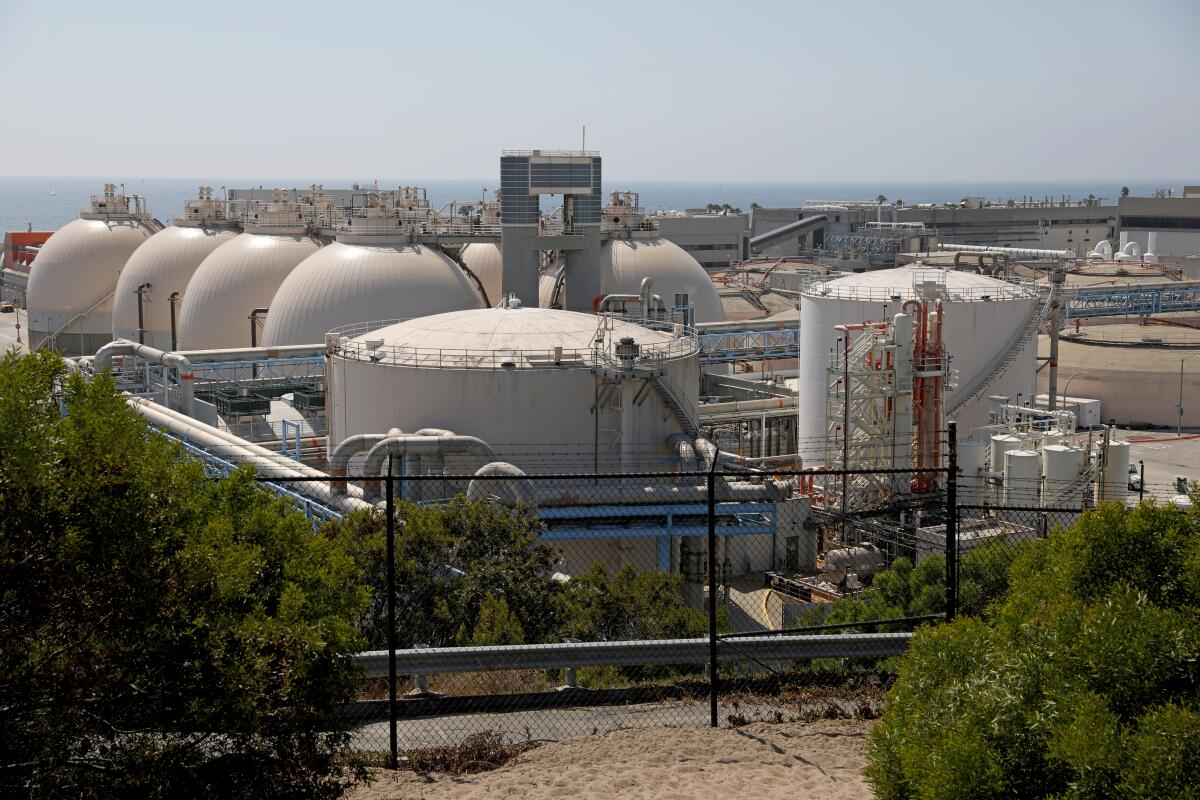
Environment
- Three years after a massive spill polluted L.A. beaches, the city agreed to spend $20 million on improvements to a plant responsible for the environmental blunder.
- California legislators say new laws must protect farmworkers from extreme heat.
The Obamas took the stage at night 2 of the DNC
- Obama passed the mantle of hope in fierce, fervent endorsement of Harris.
- Meet the high-profile Republican’s stumping for Harris.
- Talk of immigration is mostly absent at the DNC.
- Will Beyoncé or Taylor Swift show up at the DNC? Unsubstantiated hope springs eternal.
Hollywood plot twists
- The chaotic auction of Paramount was thrown an eleventh-hour curveball by former Seagram and Warner Music executive Edgar Bronfman Jr.
- Disney backtracked on tossing a wrongful death lawsuit because the plaintiff signed up for Disney+.
- Brad Pitt and Angelina Jolie’s daughter Shiloh officially dropped Pitt from her last name.
Crime and policing
- ‘Reservoir Dogs’ star Michael Madsen was arrested after an alleged domestic violence incident in Malibu.
- Johnny Wactor’s accused killers tied to thefts in L.A., Beverly Hills and Ontario, police say.
- LAPD moves to fire supervisors of troubled Mission gang unit.
Disney
- Disney reverses course on wrongful-death lawsuit, agrees to let case proceed in court.
- One of Disneyland’s original rides plans to remove racist tropes.
More big stories
- Residents forced to leave a South L.A. building due to ‘unsafe’ conditions say they don’t know where they’ll live.
- Nearly $1 billion in funds was left unspent by centers for disabled Californians.
- COVID and bird flu are rising. Here’s how to keep yourself safe.
Get unlimited access to the Los Angeles Times. Subscribe here.
Commentary and opinions
- Times editorial board: Harris’ nomination marks an extraordinary moment in American history.
- Anita Chabria and Mark Z. Barabak: Biden showed what it means to make America great — and why Democrats are glad to bid him farewell.
- Robin Abcarian: Warren Hern is one of the country’s few late-term abortion doctors. This is what drives him.
Today’s great reads
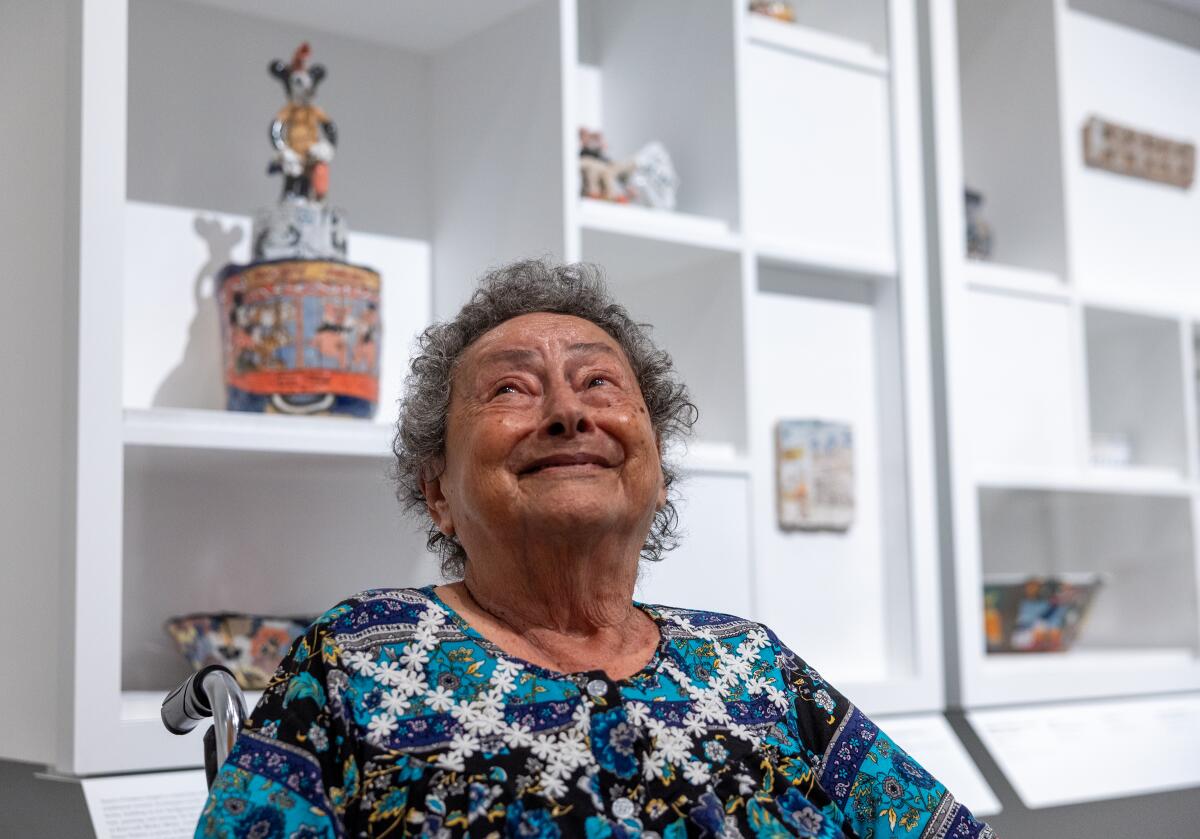
At 95, Magdalena Suarez Frimkess gets her first major museum retrospective. ‘The work keeps me alive.’ Suarez Frimkess’ artistic talent was first discovered by nuns when she was 9 and living in a Venezuelan orphanage. Now, her work is collected by fellow artists Cindy Sherman and Kaws, director Sofia Coppola and music mogul Benny Blanco.
Other great reads
- Vladimir Duthiers was a 40-year-old unpaid intern before he found success at ‘CBS Mornings.’
- A Girl Scout troop for young migrants offers a haven in a chaotic city.
How can we make this newsletter more useful? Send comments to essentialcalifornia@latimes.com.
For your downtime

Going out
- 🧺 Here are 12 of L.A.’s prettiest picnic locations that are conveniently near delicious takeout.
- 🎭 Review: Sasha Velour, winner of ‘RuPaul’s Drag Race,’ tells her own story in ‘Velour: A Drag Spectacular’
Staying in
- 📺 In a new documentary on Peacock, Scott Peterson presents alternative theory of his wife’s murder.
- 📖 The violence of rural life blends with the gravity of Chinese myth in the horror novel ‘Sacrificial Animals’
- 🧑🍳 Here’s a recipe for coconut raspado with jammy plums.
- ✏️ Get our free daily crossword puzzle, sudoku, word search and arcade games.
And finally ... a great photo
Show us your favorite place in California! Send us photos that scream California and we may feature them in an edition of Essential California.
Today’s great photo is from staff photographer Brian van der Brug of this week’s rare super blue moon rising above Warner Center and the San Fernando Valley.
Have a great day, from the Essential California team
Ryan Fonseca, reporter
Defne Karabatur, fellow
Andrew Campa, Sunday reporter
Kevinisha Walker, multiplatform editor and Saturday reporter
Christian Orozco, assistant editor
Stephanie Chavez, deputy metro editor
Karim Doumar, head of newsletters
Check our top stories, topics and the latest articles on latimes.com.
Sign up for Essential California
The most important California stories and recommendations in your inbox every morning.
You may occasionally receive promotional content from the Los Angeles Times.
